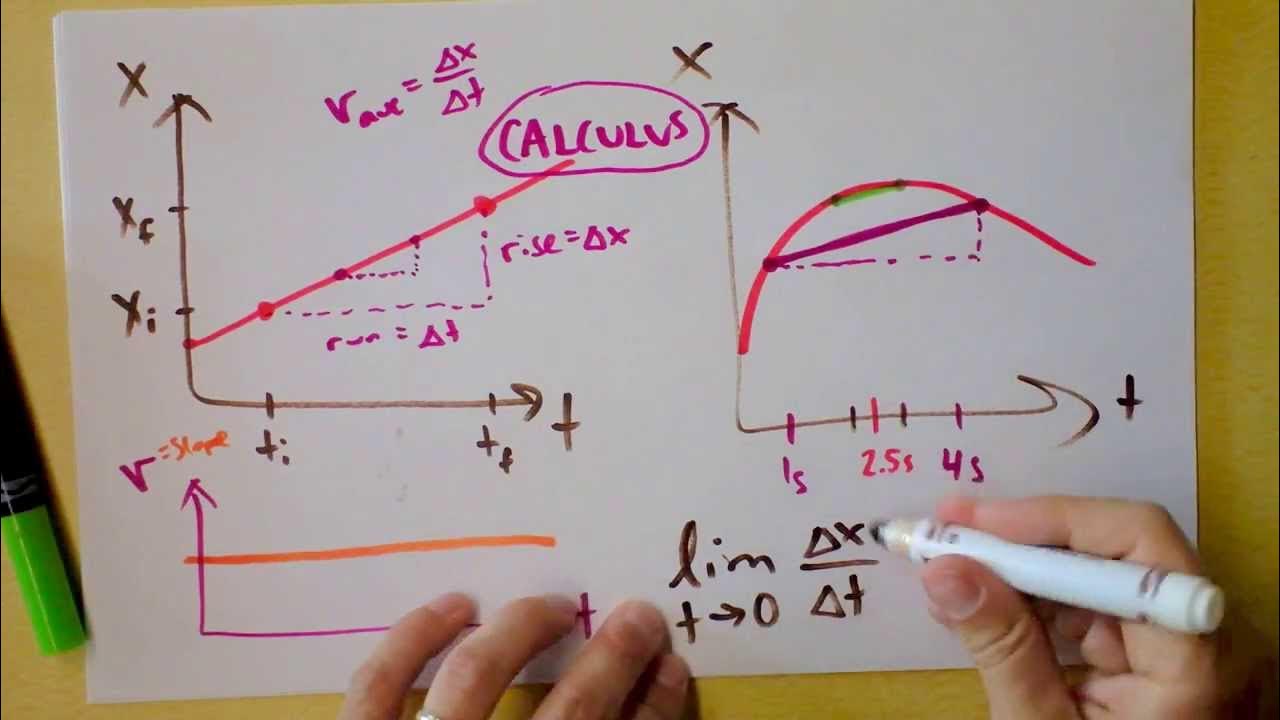GCSE Physics - Acceleration #52
Summary
TLDRThis video explains acceleration as the rate of change in velocity, illustrating how objects speed up or slow down. It introduces two key equations for calculating acceleration, one involving time and the other distance. The script uses an example of a car accelerating from 15 to 35 meters per second in 5 seconds to demonstrate the concept of average acceleration. It also discusses constant acceleration and shows how to calculate the height from which a ball was dropped using its final velocity due to gravity, assuming no air resistance.
Takeaways
- 🔍 Acceleration is the rate of change in velocity, indicating how quickly something speeds up or slows down.
- 📐 Acceleration is measured in meters per second squared (m/s²).
- 📈 The first key equation for acceleration is \( a = \frac{\Delta v}{t} \), where \( \Delta v \) is the change in velocity and \( t \) is time.
- 🔄 Delta \( \Delta \) signifies 'change', and \( \Delta v \) can also be written as \( v - u \), with \( v \) as final velocity and \( u \) as initial velocity.
- 🚗 An example provided is a car accelerating from 15 m/s to 35 m/s in 5 seconds, resulting in an acceleration of 4 m/s².
- 📊 Acceleration can be a vector quantity, having both direction and magnitude, and can be negative, indicating deceleration.
- 🔄 The calculated acceleration in the car example is the average acceleration over the given time period.
- 🚀 The second equation for acceleration includes distance, \( s \), and is used when distance is given instead of time.
- 🌐 If an object starts from rest, its initial velocity \( u \) is zero.
- 🌌 An example of calculating the height from which a ball is dropped, using the final velocity and acceleration due to gravity, results in a height of 2.5 meters.
- 👍 The video encourages viewers to like and subscribe for more content.
Q & A
What is acceleration in the context of physics?
-Acceleration is the rate of change in velocity, which describes how quickly something speeds up or slows down.
What are the units for measuring acceleration?
-Acceleration is measured in meters per second squared (m/s²).
What does the delta sign (Δ) represent in physics equations?
-The delta sign (Δ) represents the change in a quantity, such as change in velocity (Δv).
How can you express the change in velocity mathematically?
-The change in velocity can be expressed as the final velocity (v) minus the initial velocity (u), or as Δv.
What is the formula to calculate acceleration when you know the initial and final velocities and time?
-The formula to calculate acceleration is Δv divided by time (t), where Δv is the change in velocity (v - u).
Why is acceleration considered a vector quantity?
-Acceleration is a vector quantity because it has both magnitude and direction, which can be positive or negative indicating speeding up or slowing down.
What is the difference between average acceleration and uniform acceleration?
-Average acceleration is the total change in velocity divided by the time taken, while uniform acceleration implies a constant rate of acceleration throughout the time interval.
Why might the calculated acceleration be an average rather than constant?
-The calculated acceleration might be an average because the actual acceleration of an object can vary over time, not remaining constant.
What is the significance of the second acceleration equation involving distance?
-The second equation is used when the distance traveled is known, and it includes distance instead of time to calculate acceleration.
How can you calculate the height from which an object was dropped if you know its final velocity?
-You can use the second acceleration equation, rearranging it to solve for distance (height), given the initial velocity is zero and the acceleration due to gravity is 9.8 m/s².
What is the acceleration due to gravity, and how does it affect falling objects?
-The acceleration due to gravity is approximately 9.8 m/s². It affects falling objects by causing them to accelerate downwards at this rate if air resistance is ignored.
Outlines

Cette section est réservée aux utilisateurs payants. Améliorez votre compte pour accéder à cette section.
Améliorer maintenantMindmap

Cette section est réservée aux utilisateurs payants. Améliorez votre compte pour accéder à cette section.
Améliorer maintenantKeywords

Cette section est réservée aux utilisateurs payants. Améliorez votre compte pour accéder à cette section.
Améliorer maintenantHighlights

Cette section est réservée aux utilisateurs payants. Améliorez votre compte pour accéder à cette section.
Améliorer maintenantTranscripts

Cette section est réservée aux utilisateurs payants. Améliorez votre compte pour accéder à cette section.
Améliorer maintenant5.0 / 5 (0 votes)






